Orvieto
Back to Italy 2016 Index
Orvieto is situated on the flat summit of a large butte of volcanic tuff, and was a major
center of Etruscan civilization. Orvieto was annexed by Rome in the third century BC.
Because of its site on a high, steep bluff of tufa, the city was virtually impregnable. It was
last conquered by Julius Caesar. The city became one of the major cultural centers of its
time when Thomas Aquinas taught at the studium there. A small university (now part of
the University of Perugia), had its origins in a studium generale that was granted to the city by
Pope Gregory XI in 1736.
 |
| A funicular took us up to the old city in a couple of minutes, as opposed to a long walk. This is an old one on display. |
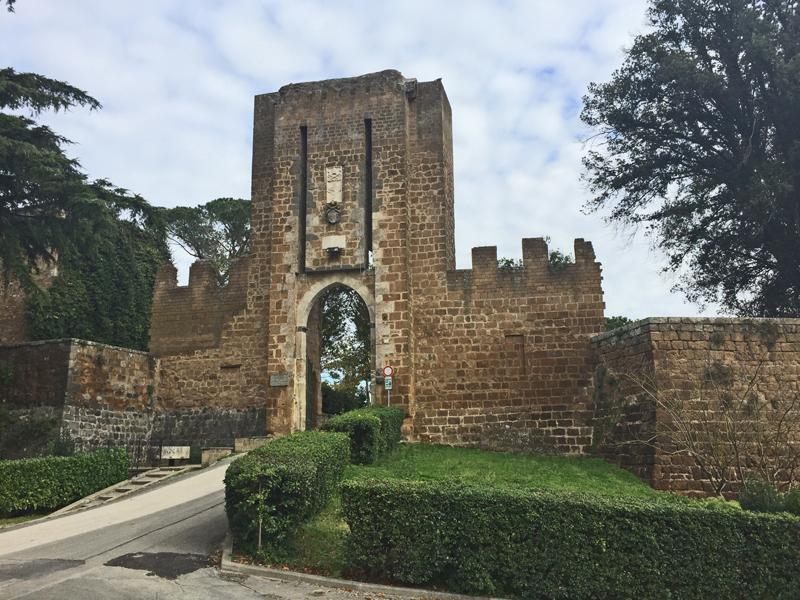 |
| Entrance
to St. Patrick’s Well (Pozzo di S. Patrizio). The well was
commissioned by Pope Clement VII in 1527 after the sack of Rome forced
him to take refuge in Orvieto. He became concerned there wouldn’t
be enough water available in Orvieto in the case of a siege. It
took Antonio da Sangallo the Younger of Florence 10 years to design and
build the well, which was completed in 1537 (during the papacy of Pope
Paul III). |
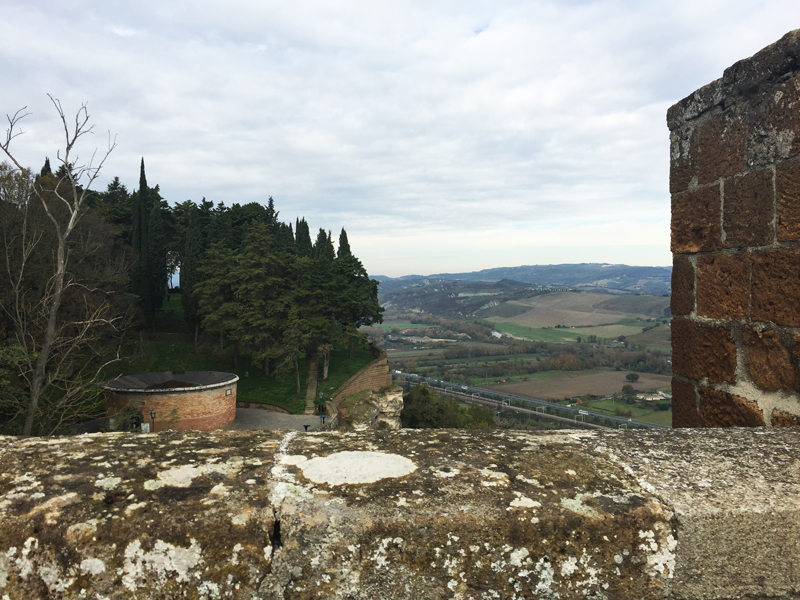 |
| The
well reaches 53.15 metres (174.4 ft) deep and is 13 meters (43 ft) in
diameter. You can reach the bottom by making your way down one of
two double-helix staircases. This view is from the old city walls, the Fortezza dell'Albornoz. |
 |
| The old city's fortified walls provide spectacular views of Southwestern Umbria. |
 |
 |
The Old City
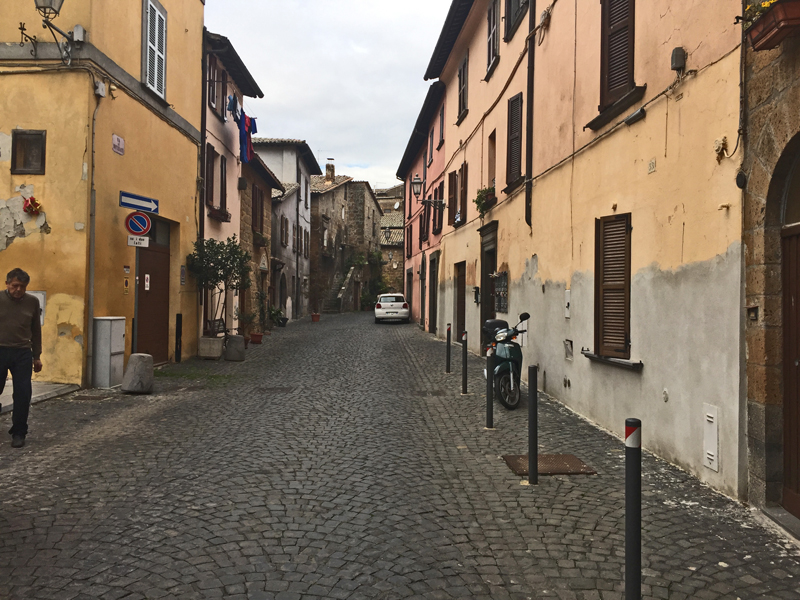 |
 |
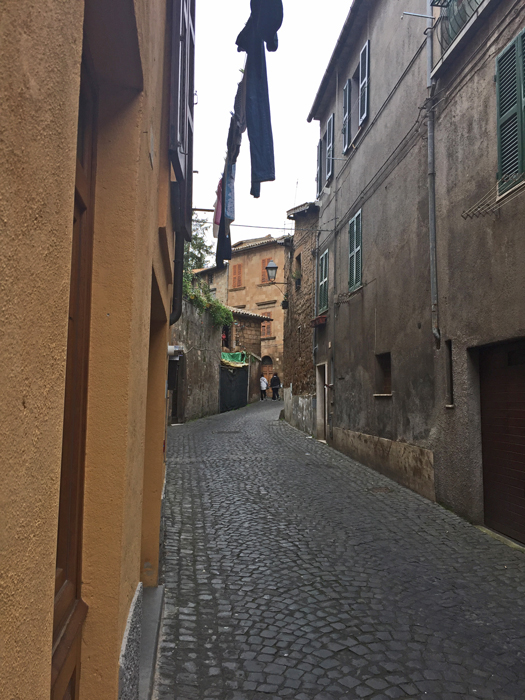 |
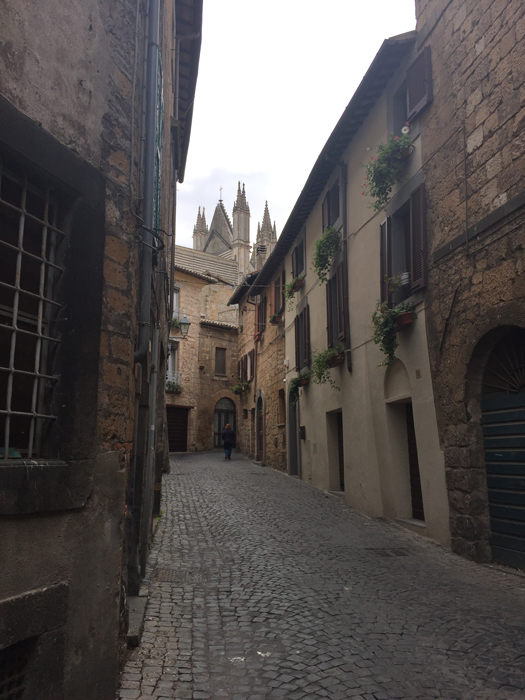 |
| The Duomo di Orvieto; Cattedrale di Santa Maria Assunta (Cathedral of the Assumption of St. Mary) is visible above the rooftops. |
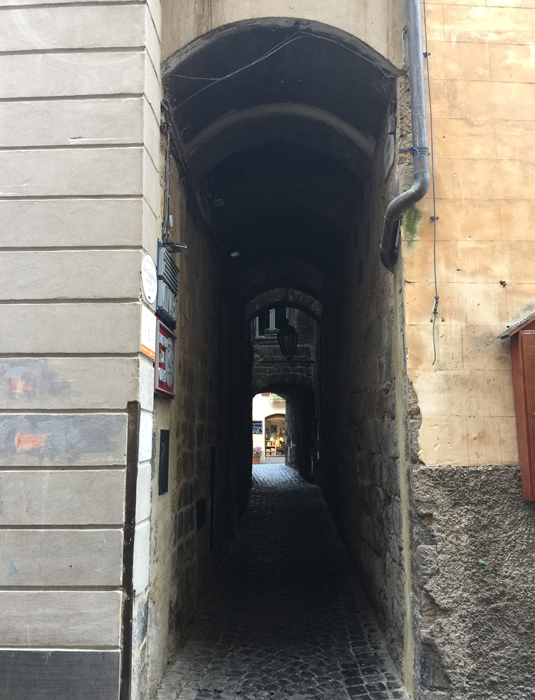 |
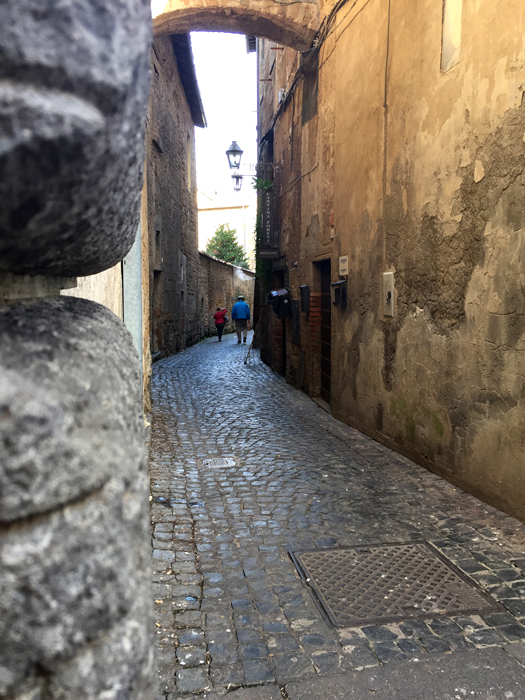 |
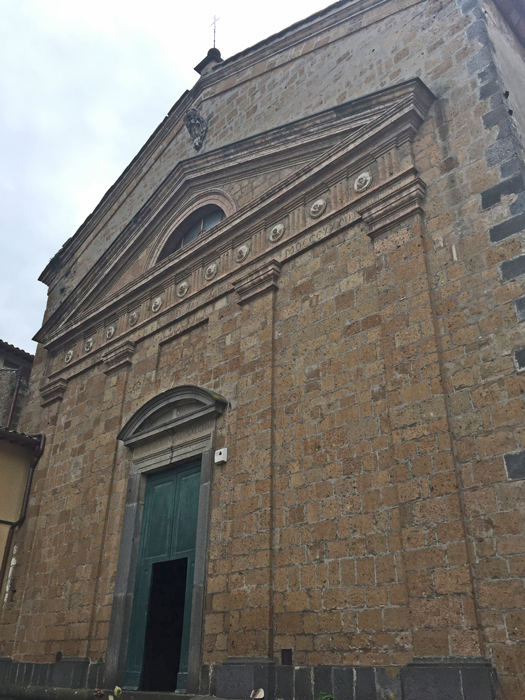 |
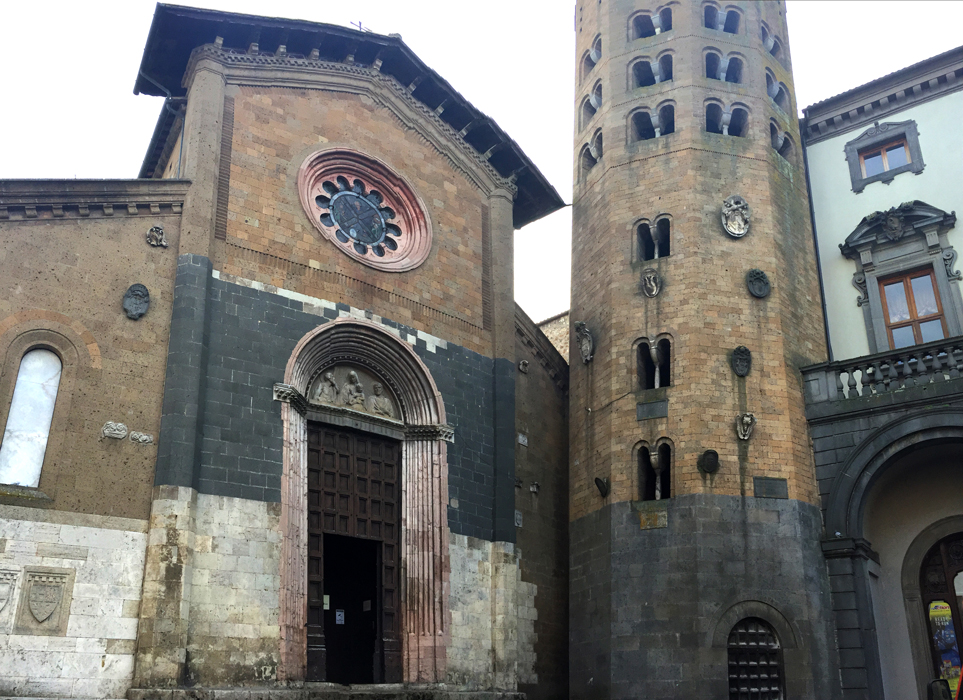 |
| Chiesa di Sant'Andrea, on the Piazza della Repubblica.
Built and attached to the side of the Town Hall, to define the area
that goes from Piazza della Repubblica to Corso Cavour, the Church of
Saint Andrew - the full name of which is "Collegiate Church of Saints
Andrew and Bartholomew" - is the most ancient Christian place of
worship in Orvieto, as it was erected during the sixth century on the
ruins of a pre-existing Etruscan temple in the area of the Forum. |
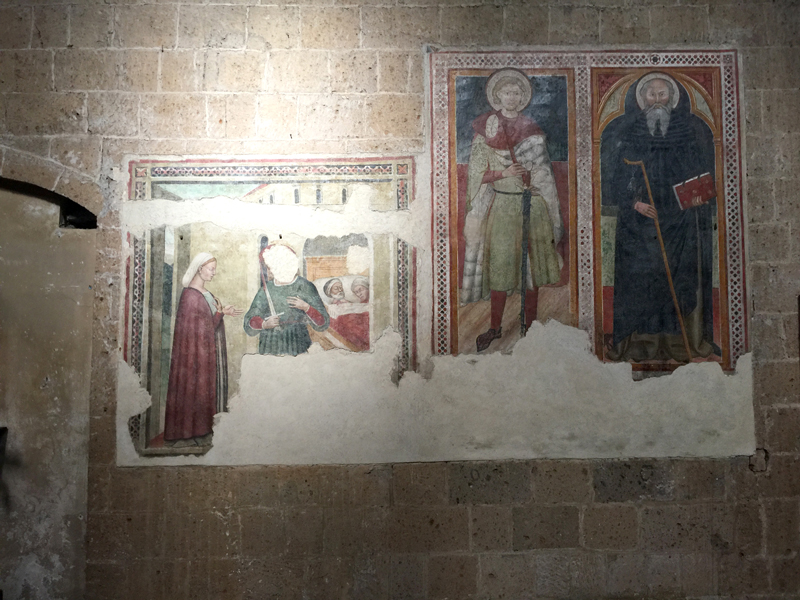 |
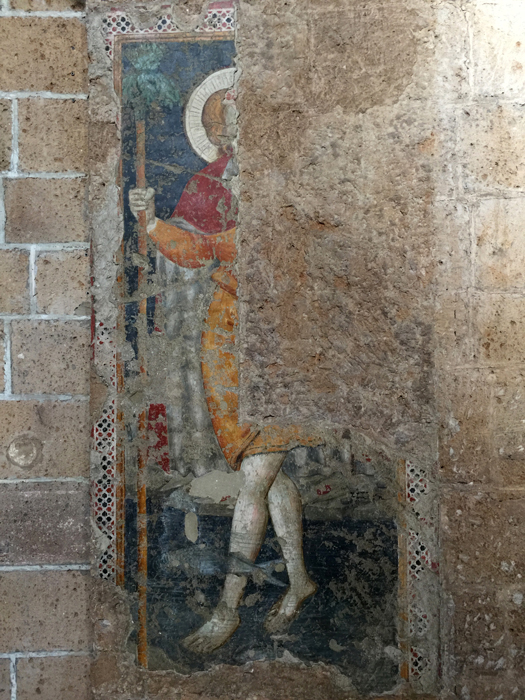 |
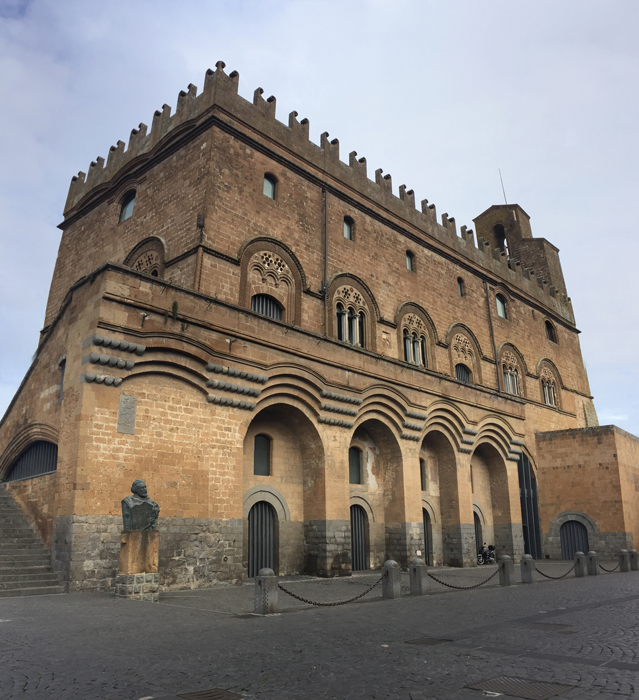 |
| Work
on the construction of the Palazzo del Capitano del Popolo began in the
13th century on an area that had been occupied since 1157 by the papal
palace built under the reign of Pope Hadrian IV. The original Palazzo
del Capitano was a single ground-floor loggia that was used as a market
place or for meetings, from which the magistrate would speak to the
citizens. |
 |
Cattedrale di Santa Maria Assunta
 |  |
| Piazza del Duomo - Cathedral Plaza. |
As is usual with important sites, security is evident.
|
 |  |
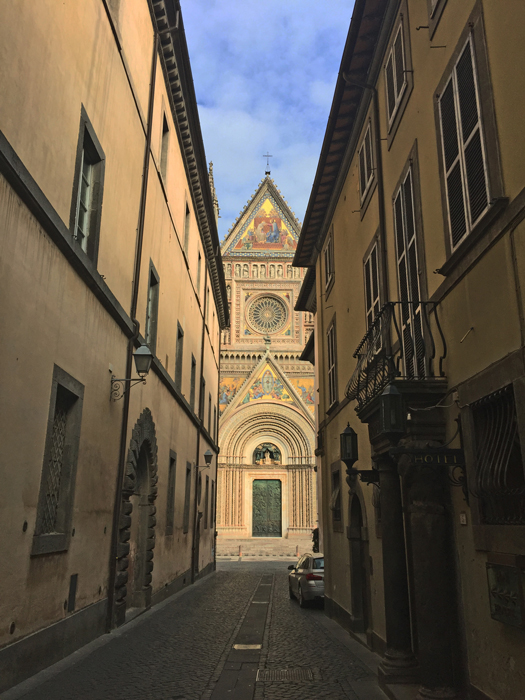 |
| View from Via L. Maitani. |
Cathedral Facade
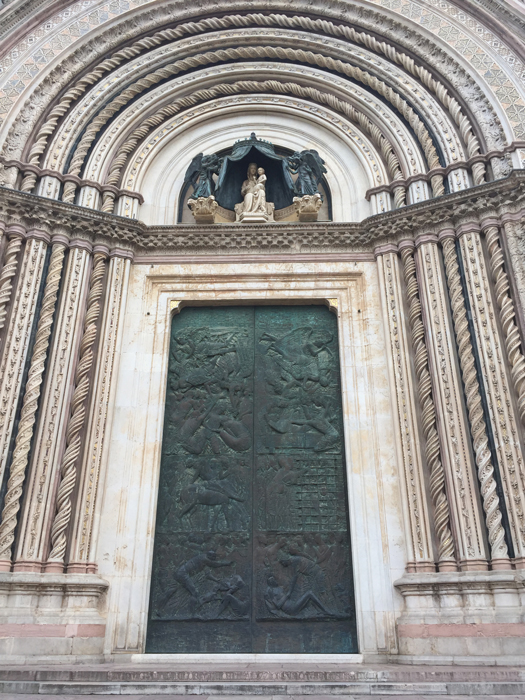 |
| Portal with Madonna and Child attended by angels, created by Andrea Pisano in 1347. |
 |
| The
bas-reliefs on the piers depict biblical stories from the Old and New
Testament. They are considered among the most famous of all
14th-century sculpture.
The Lion of St. Mark tops this one, illustrating the Tree of Jesse with
scenes from the Old Testament and messianic prophesies of Redemption. |
 |
| The Eagle representing St. John the Evangelist tops scenes from the New Testament and episodes from the lives of Jesus and Mary. |
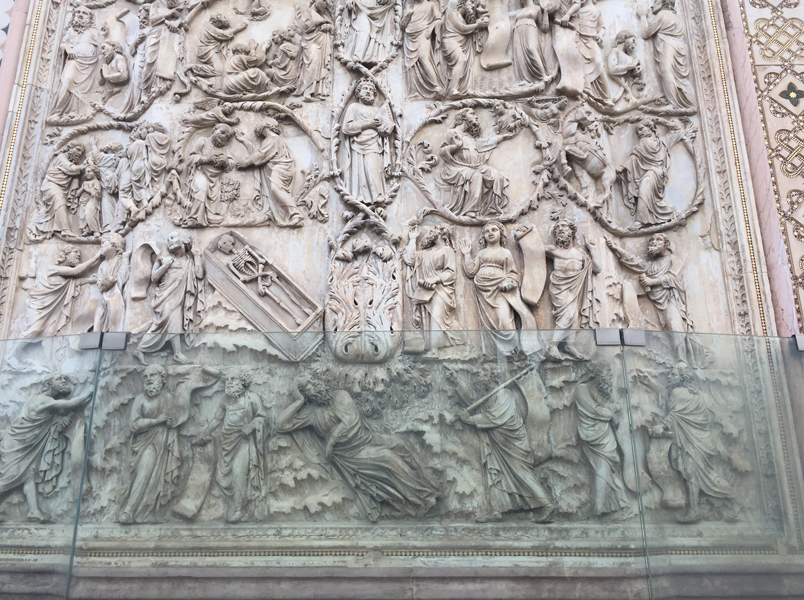 |
| Detail, sleeping Abraham. |
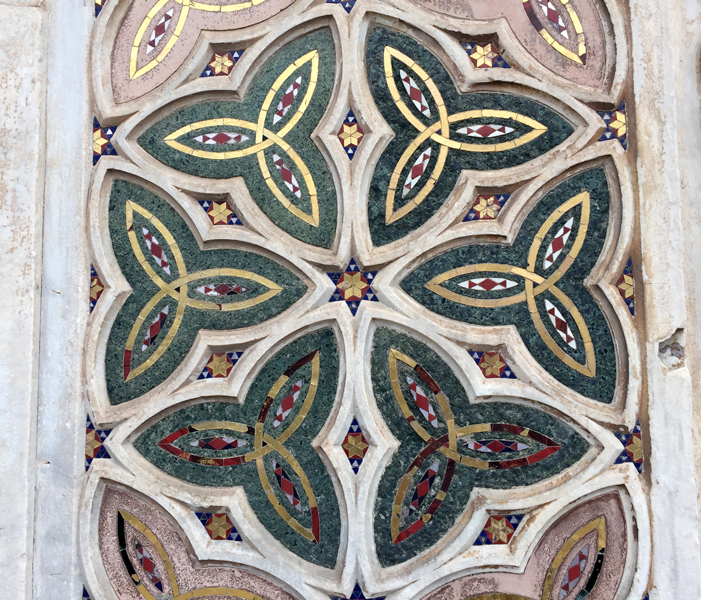 |
| Mosaic detail. |
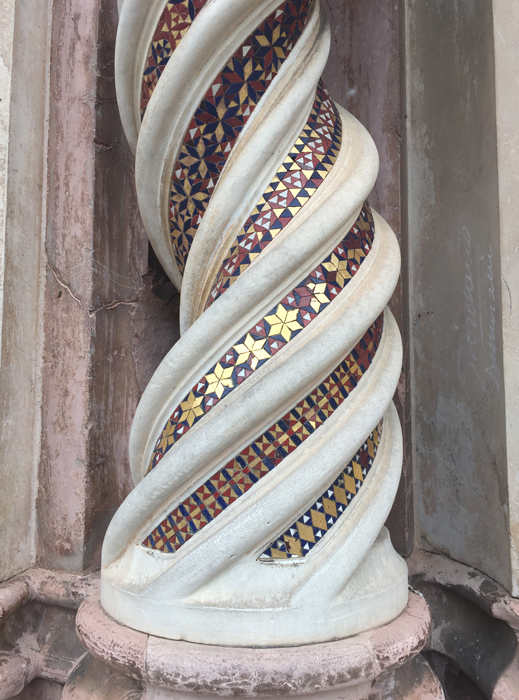 |
| These mosaic-inlaid compound spirals are true testaments to the skill of their creators. |
Interior of the Cathedral
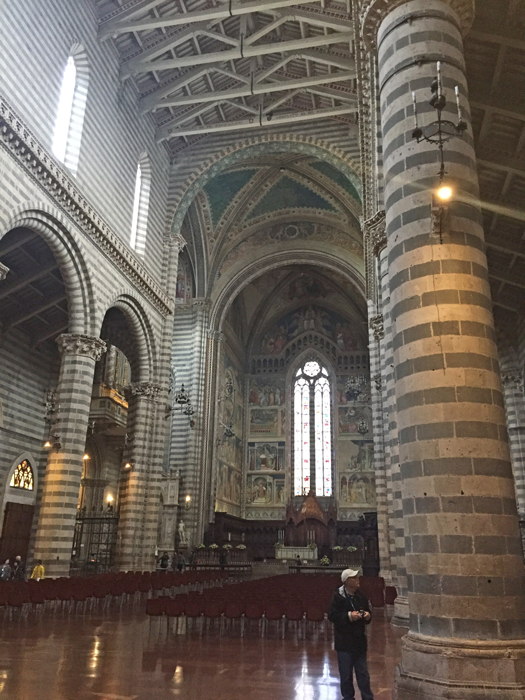 |
| The
interior, like the exterior, is decorated with alternative rows of
basalt and travertine but only to a height of about 1.5 m. The rows
above them were painted in alternative rows of black and white stripes
in the late nineteenth century. The cylindrical columns also consist of alternate rows of travertine and basalt. |
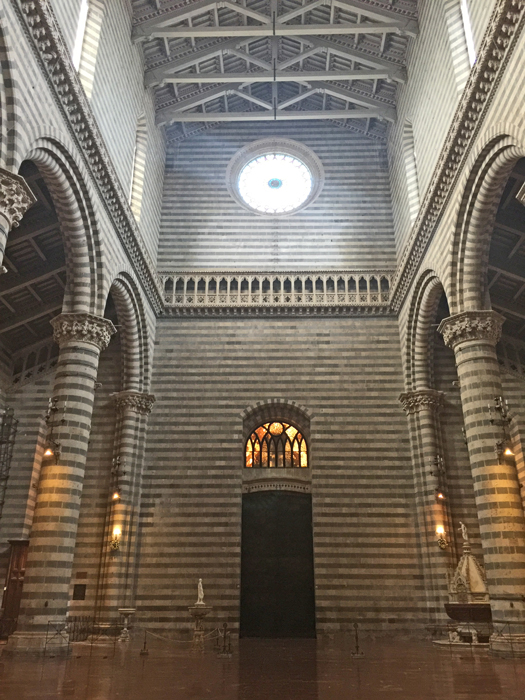 |
| Main entrance in back of the cathedral. |
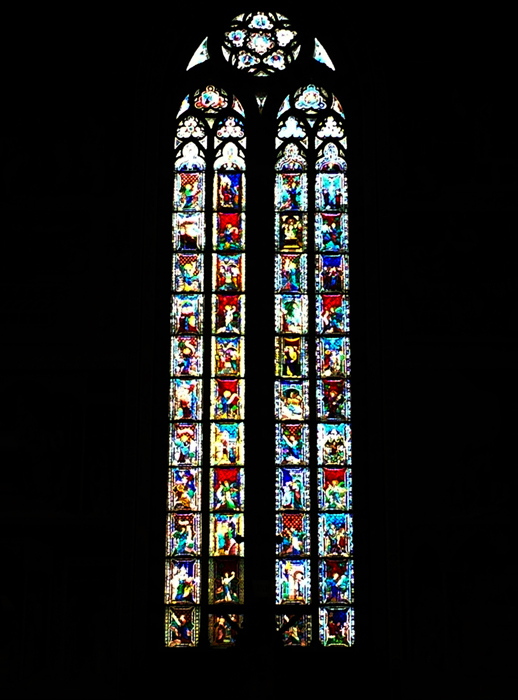 |
| The large stained-glass window in the apse was made between 1328 and 1334 by Giovanni di Bonino, a glass master from Assisi. |
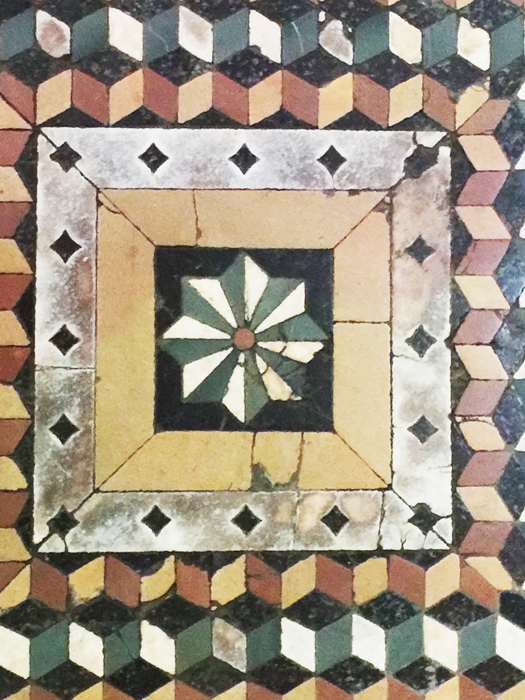 |
| Detail of floor tile mosaics. |
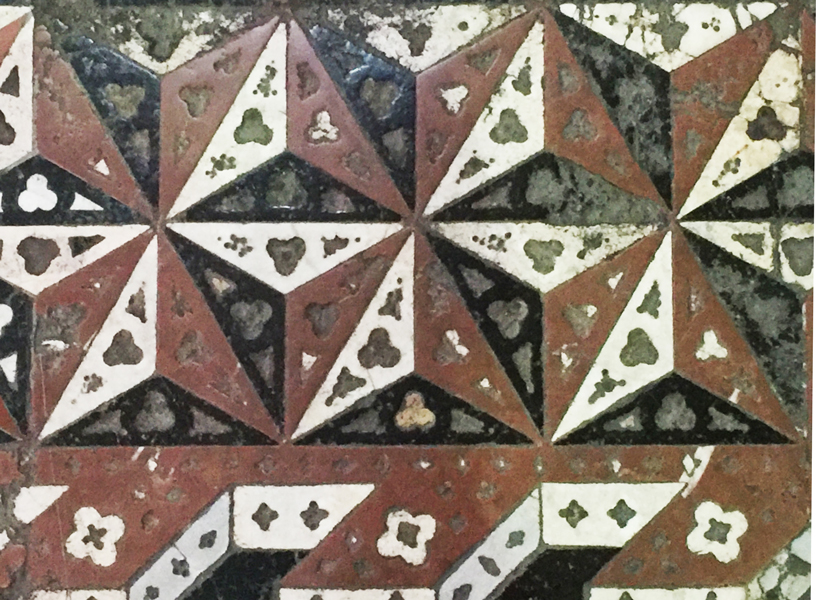 |
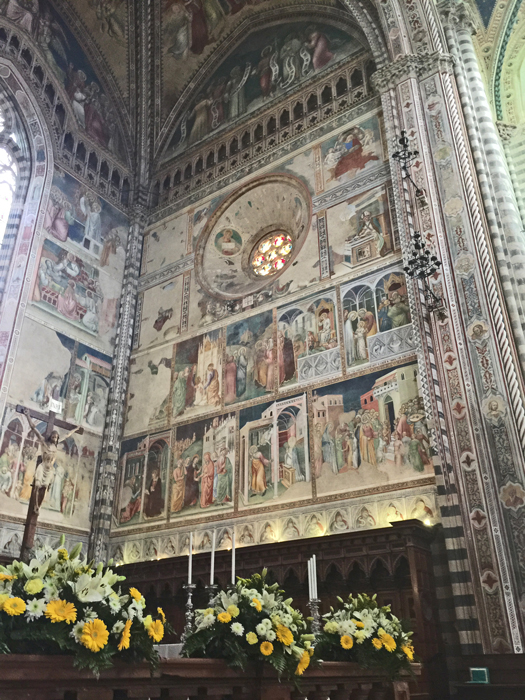 |
| Behind
the altar are a series of damaged Gothic frescoes dedicated to the life
of the Virgin Mary, completely occupying the three walls. They were
created around 1370 by the local artist Ugolino di Prete Ilario and a
few collaborators such as Pietro di Puccino, Cola Petruccioli and
Andrea di Giovanni. It took them about ten years to finish. This series
of frescoes were the largest in Italy at that time. They were restored
every hundred years for several following centuries. Two scenes, the
Annunciation and the Visitation, were redone by Antonio del Massaro at
the end of the 15th century. |
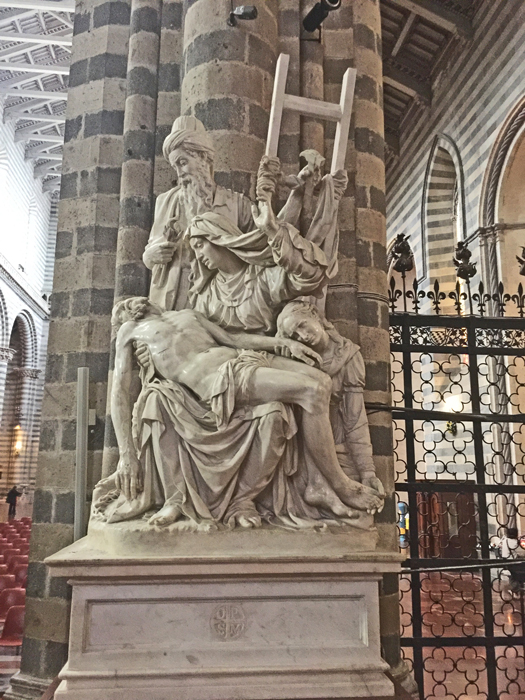
|
| This pieta was sculptured from a single block of marble by Ippolito. Ippolito Scalza was the architect of the Orvieto Duomo, and the sculptor of several of its most important sculptures. |
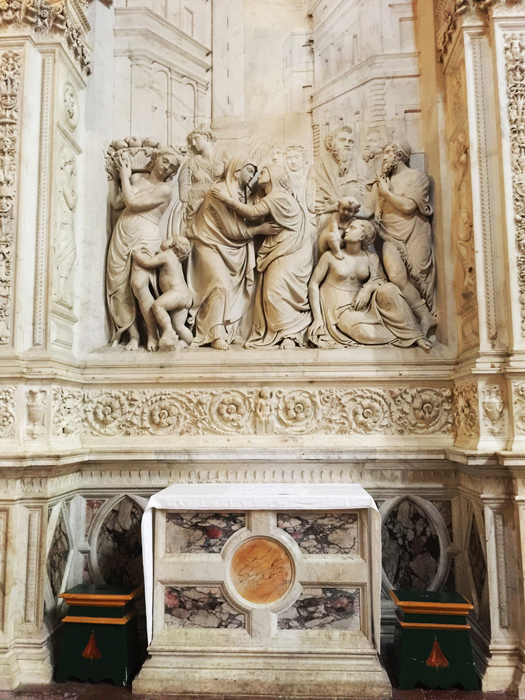 |
| Beautiful bas-relief sculpture on the right side of the apse. |
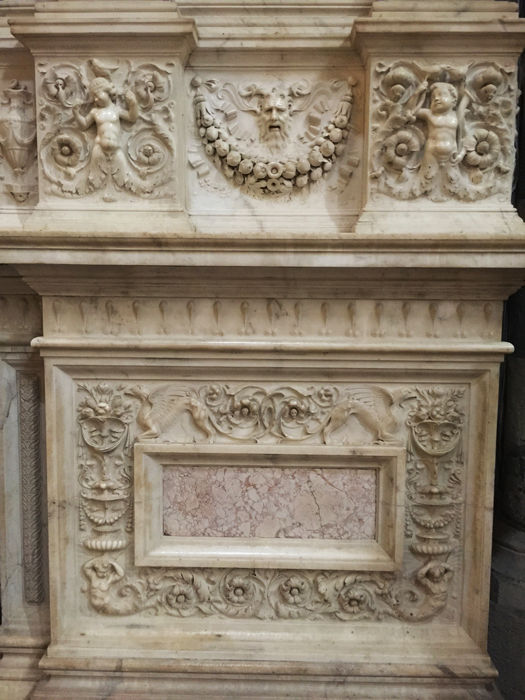 |
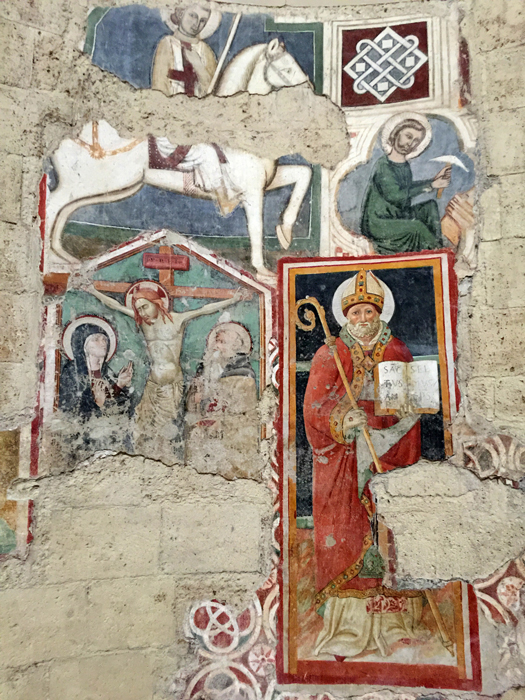 |
| There are a number of damaged frescoes dating from the 14th century on the walls of the cathedral. |
 |
 |
Cappella del Corporale
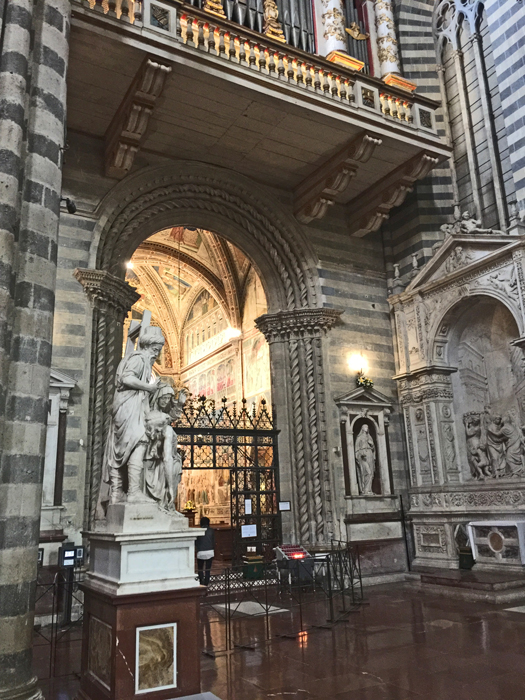 |
| The
entrance to the Cappella del Corporale lies on the north side of the
main crossing. It was built between 1350 and 1356 to house the stained
corporal of the miracle of Bolsena.
It is from this chapel that the reliquary with the corporal is carried
in religious processions through the town on the Feast of Corpus
Christi. |
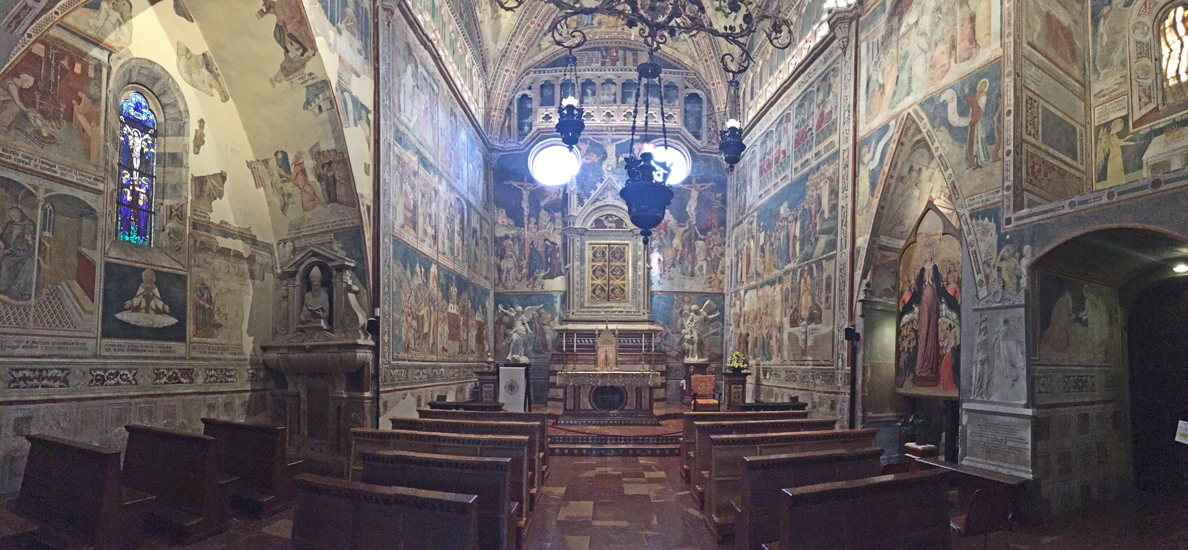 |
| The
chapel is decorated with frescoes depicting on the left wall the
history of the Eucharist, and on the right wall miracles concerning the
bleeding host throughout church history. They were painted between 1357
and 1363 by three artists from Orvieto: Ugolino di Prete Ilario,
Domenico di Meo and Giovanni di Buccio Leonardelli. |
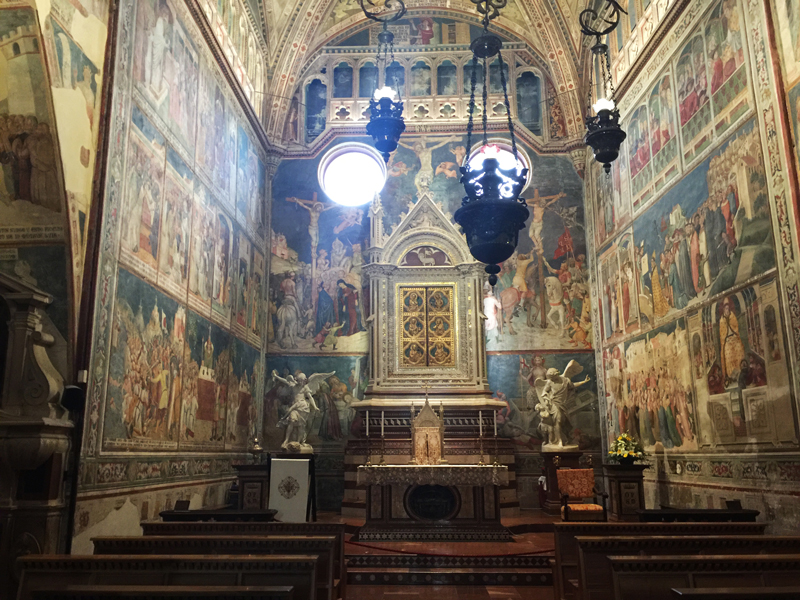 |
| At
the centre of the chapel is a large reliquary in silver, gilded silver
and varicoloured translucent enamel containing the bloodstained
corporal. This Gothic masterpiece, in the form of a triptych, was built
by the Sienese goldsmith Ugolino di Vieri between 1337 and 1338. It
shows 24 scenes of the life of Christ and eight stories about the
corporal. On the sides of the altar, the statues by Agostino Cornacchini represent the archangels Michael and Gabriel. |
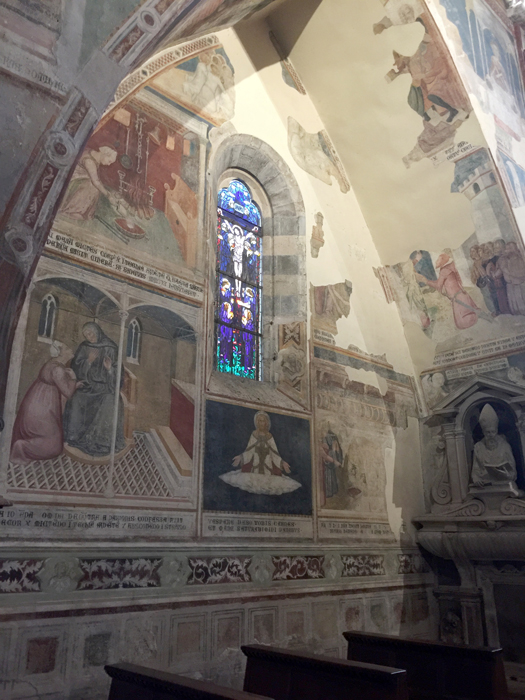 |
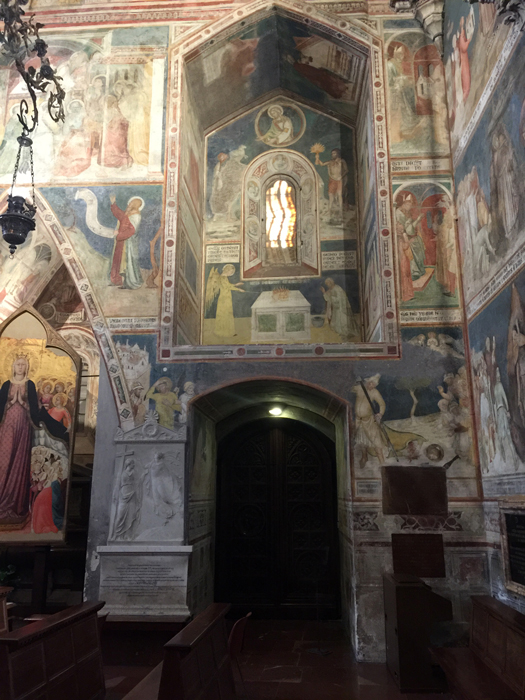 |
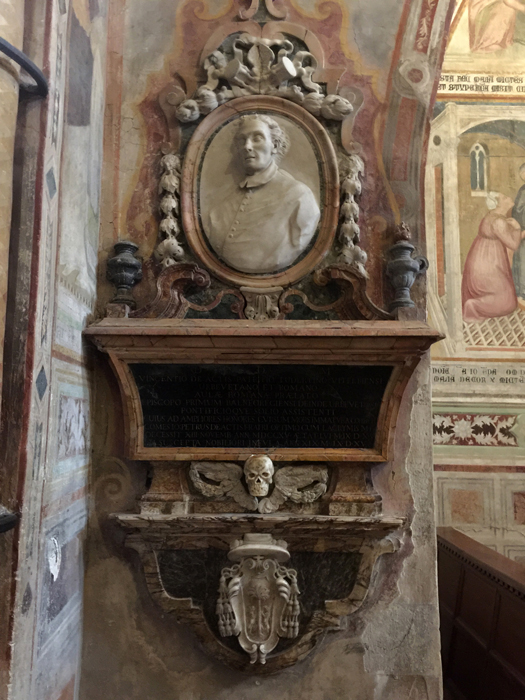 |
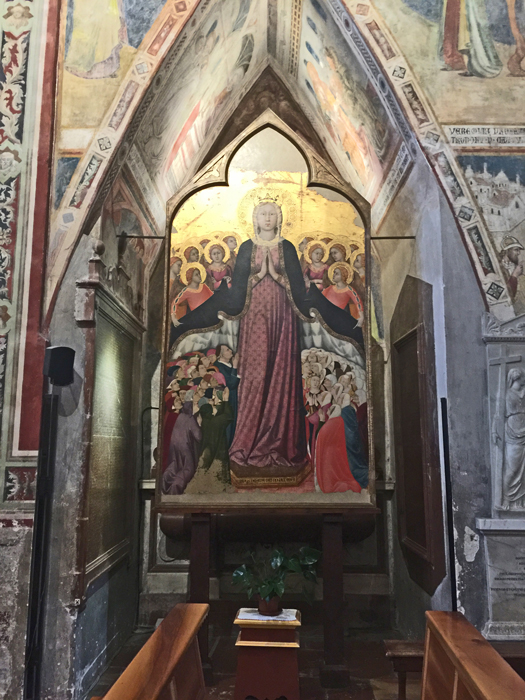 |
| In
a niche on the right wall stands a panel of the Madonna dei
Raccomandati (c. 1320). It was painted in the Italian Byzantine
tradition by the Sienese artist Lippo Memmi, brother-in-law of Simone
Martini. |
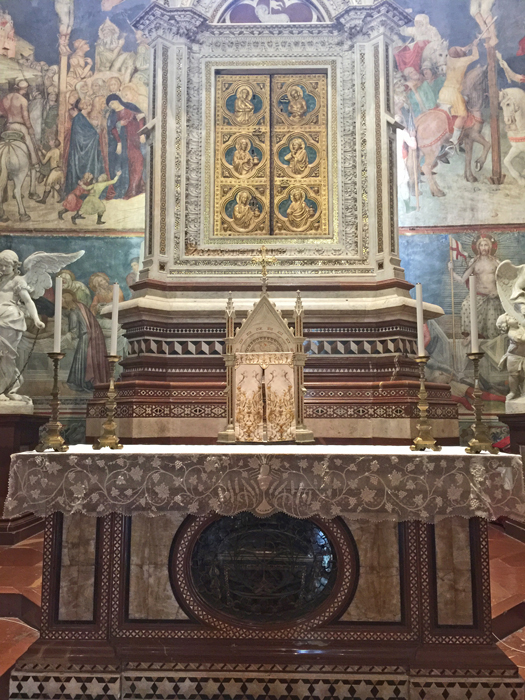 |
| Altar in the Cappella del Corporale. |
Cappella della Madonna di San Brizio
This chapel was a fifteenth-century addition to the cathedral. It is almost identical in structure to the
Chapel of the Corporal. The construction of this chapel (also known as the Cappella Nuova and Signorelli
Chapel) was started in 1408 and completed in 1444. Fra Angelico and Benozzo Gozzoli began the
decoration of the vault of the chapel in 1447. They painted only two sections: Christ in Judgment and
Angels and Prophets. After being abandoned for about 50 years, the decoration of the rest of the vault
was awarded to Luca Signorelli on 5 April 1499. He added the scenes with the Choir of the
Apostles, of the Doctors, of the Martyrs, Virgins and Patriarchs.
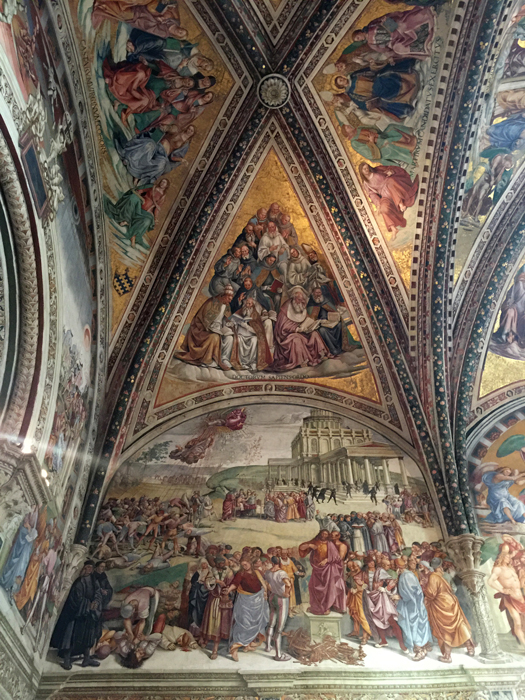 |
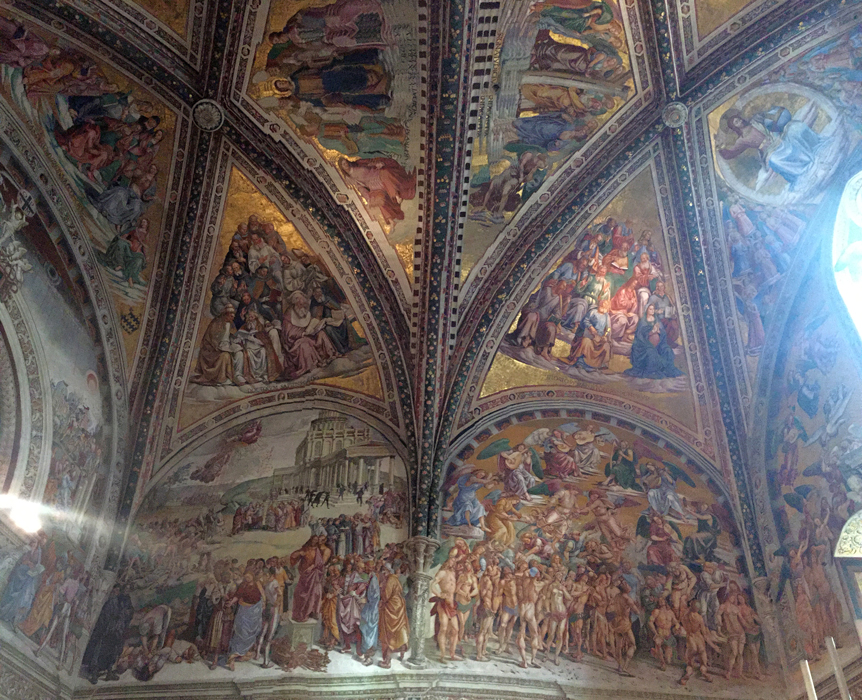 |
| The Elect in Paradise, by Signorelli, shows the elect in ecstasy looking up to music-making angels. |
 |
 |
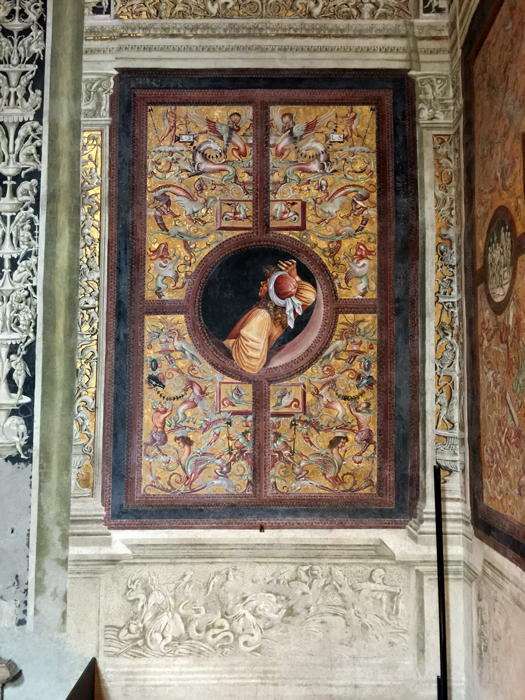 |
| Luca Signorelli, Empedocles. |
 |
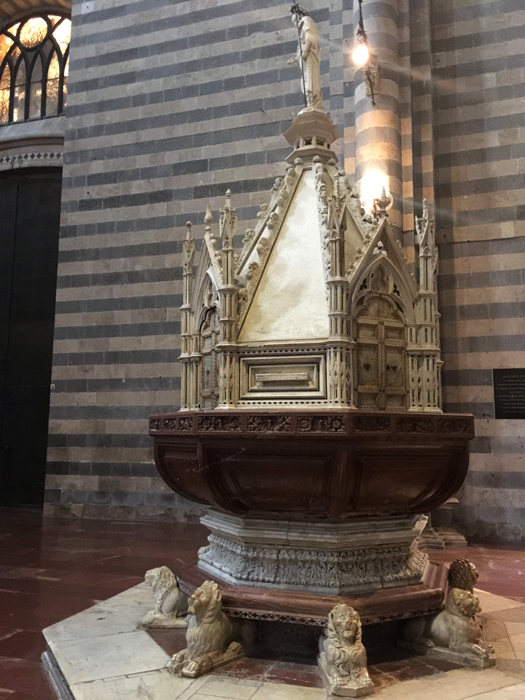 |
| Near
the left entrance is the large marble baptisimal font with lions and
elaborate frieze reliefs. It was begun in 1390 by Luca di Giovanni. It
was expanded sixteen years later by Pietro di Giovanni from Freiburg,
who added the red marble basin, and Sano di Matteo, who sculpted the
octagonal pyramid base in 1407. |
 |
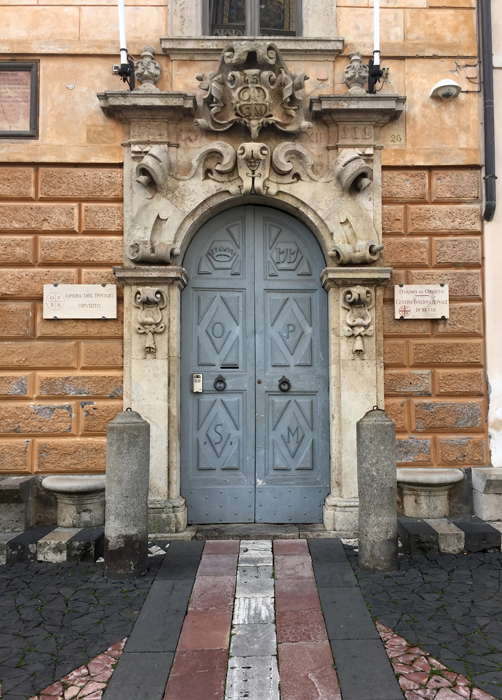 |
| Opposite
the cathedral is a large grand building constructed in 1359 to house
the cathedral’s administrative offices and enlarged in 1857 to create a
museum on the ground floor housing Etruscan artifacts discovered around
the city, which was once a major Etruscan capital. |
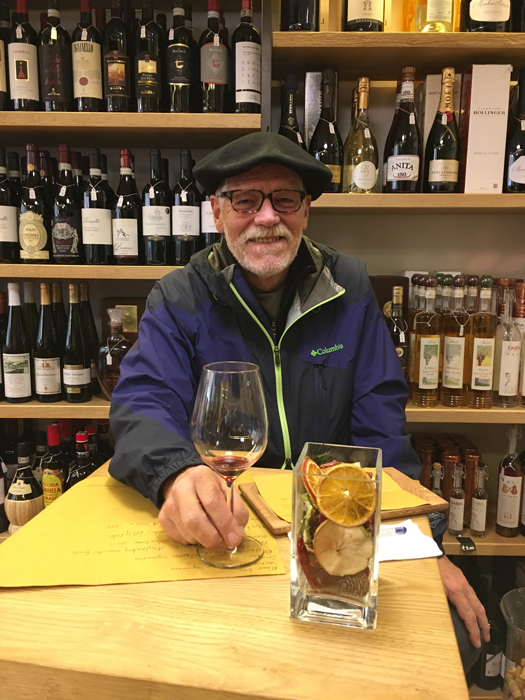 |
| Stopping in an enoteca for some wine tasting. Touring is hard work! |
Back to Italy 2016 Index